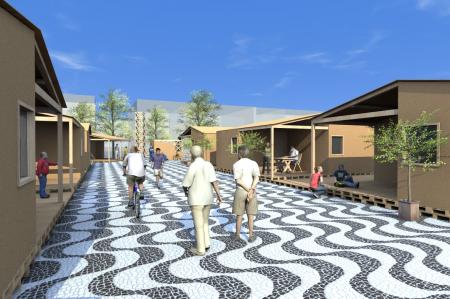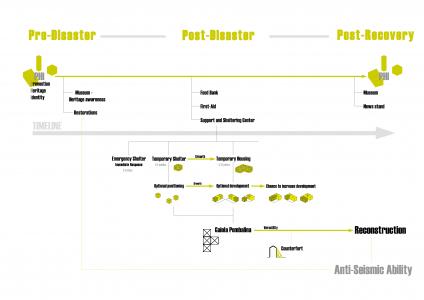| |
PHI
Lisboa, Portugal
Ana Luísa Gonçalves
Daniel Vaz Monteiro
Jonathan Fernandes
Faculdade de Arquitectura e Artes da Universidade Lusíada de Vila Nova de Famalicão, V.N. de Famalicão, Portugal
Artur Feio; Daniel Félix
Full Document (PDF)
Abstract
In 1755, Lisbon, the capital of Portugal, suffered one of the largest earthquakes of Europe and the greatest of the country so far, which caused an overwhelming destruction. The recovery was impressive, and the reconstruction program included a worldwide innovative city’s plan as well as a construction system with a great performance to resist seismic activity. Nowadays, due to irresponsible interventions the buildings anti-seismic proprieties have been diminished a lot. This is a worrying issue, since studies show that a similar earthquake may happen in the future.
So, as Lisbon’s development occupies all city, it becomes clear that all of the many squares will be used to receive the temporary solutions, although always preserving a part of the public space. The strategy begins with a singular building with many functions that will prevail throughout pre to post-disaster. It represents the three main points of the strategy – Prevention, Heritage and Identity. This will happen by restoring the building’s post-1755 anti-seismic system, using a similar structure alongside local materials on the temporary solutions, and then moving these to the permanent housing’s reconstruction. Also the people’s optional placing, orientation and development of their own housing will preserve the sense of Identity.
|
| |

image of the settlement (architectural scale or example of unit)

image of the settlement (urban scale or group of housing units)

diagram of the actors involved and the relationships between them
|
|



